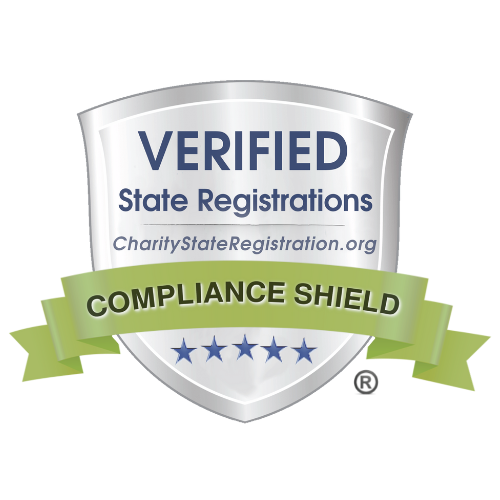After Secretary Shinseki Resignation, New Vets Announce Path Forward to Reform VA
Washington DC (June 2, 2014) – In the wake of last week’s resignation by Eric Shinseki, Iraq and Afghanistan Veterans of America (IAVA) today outlined eight steps the Obama Administration and Congress can take now to restore confidence in the Department of Veterans Affairs. Surrounded by members of IAVA, Founder and CEO Paul Rieckhoff revisited the decade of work IAVA leaders and policy analysts have done to identify problems and solutions at the VA.
“We must be careful not to equate the departure of one VA Secretary with actual progress. We have known for a long time that there is a systemic problem within the VA, and its new leader will face the same challenges as its predecessor,” IAVA CEO and Founder Paul Rieckhoff said. “Without a real plan to root out bad employees and fire incompetent managers we will not see the necessary change. Without a clear agenda to upgrade and modernize processes and systems, the VA will continue to be unable to keep up with the growing numbers and needs of America’s vets. Every day IAVA staff and case managers hear from vets across the country about the challenges they face at VA facilities, and for years we have taken that input and created our list of solutions in our annual Policy Agenda.
“We should be clear however that the VA can’t meet the needs of over 20 million veterans alone. We need the President to finally lead in the creation and execution of a true national strategy for veterans support. And this is the time to do it.
“At this critical moment of change and opportunity we look forward to partnering with the new VA leadership to ensure a 21st Century VA that always has our veterans’ backs.”
Rieckhoff added, “These eight steps provide the best plan forward to affect immediate change within the VA”:
1. Appoint a Post-9/11 veteran, or someone very familiar with our community, who is a proven, dynamic leader capable of making dramatic changes and inspiring the turnaround VA needs. The VA needs a proven reformer at the top who can end the crisis and drive the VA to become the 21st Century organization our veterans deserve. America needs a unique brand of hybrid leader–a proactive change-agent who understands Iraq and Afghanistan veterans, technology, healthcare and Congress. The new Secretary must also be an effective communicator who can level with the public, operate effectively in the midst of a growing scandal that may span dozens of cities and continue for months, and inspire the best talent in America to answer the call to serve at VA.
2. Initiate a full criminal investigation and punish all violators to the full extent of the law. The IG has revealed a full system failure. An unknown number of bad actors have ruined the reputation of the VA. Those who have violated America’s sacred trust with our veterans must be rooted out nationwide and held accountable. Only if these people are cleansed from the system will the VA workforce, IAVA members and the rest of America ever have faith and trust in the system again.
3. Implement the recommendations of interim IG report for Phoenix. The interim IG report recommended that the VA: (1) do a nationwide review of all facilities, (2) audit new requests for appointments across the system to ensure all veterans are on the list to be seen, and (3) reach out to veterans affected in Phoenix to get them into care. The VA must now to implement these recommendations immediately.
4. Pass the VA Management Accountability Act. The Senate must act now to pass the VA Management Accountability Act. The bill gives the Secretary of the VA the authority to remove under-performing Senior Executive Service employees from their jobs. Without the ability to fire poor-performing managers, the next VA Secretary will struggle to restore a culture of accountability throughout the VA.
5. Support the recommendations in IAVA’s 2014 Policy Agenda that focus on building a 21st Century VA. For years, IAVA has demanded a 21st Century VA, an organization able to find problems, respond decisively, and provide the quality of care veterans of all generations deserve. This is especially urgent for IAVA veterans who present new healthcare needs, more gender diversity, and significant geographic shifts. To move towards a 21st Century VA, Congress and the VA must:
A. Mandate best practices for managing VA medical facilities. There is a saying that when you’ve seen one VA hospital, you’ve seen one VA hospital. But there are best management practices that can improve care at the VA if implemented across the entire system.
B. Overhaul the training and technology of the VA’s scheduling system. The nationwide audit of VA facilities exposed many problems in the training of VA scheduling employees. The VA must re-establish scheduling guidelines, improve training for staff, and invest in new scheduling technology.
C. Change performance metrics to focus on quality of care. The VA scandal has exposed what many veteran organizations have talked about for years: accountability is lacking at the VA. The VA must realign its performance metrics and performance incentives to encourage and deliver quality care.
D. Smooth the Transition between the Department of Defense and the VA. Too much is lost between the DoD and VA. Despite significant investment, there is still no interoperable health record and many veterans never enroll in VA care. The DoD and VA must improve collaboration to adequately care for today’s veterans.
E. Invest in Technology to Transform the VA. The technology underpinning all of the VA’s work, including the disability claims process and appointment scheduling, is woefully outdated. Without 21st Century technology, the VA can never be a 21st Century organization.
6. Fully Fund the VA to the levels recommended by the Independent Budget. Despite consistently claiming otherwise, it is clear that the VA does not have the resources it needs to meet the demand for care. The VA currently relies on outdated and inadequate formulas to project their needs. Congress should fully fund the VA to the levels recommended by the Independent Budget, a budget written by leading veteran service organizations including IAVA. In FY2014, the IB recommended $4 billion more for discretionary medical services funds than the President requested or Congress appropriated.
7. Support best-in-class non-profit organizations that fill gaps. The VA cannot meet all of the needs of America’s veterans alone. And some vets will never go to the VA. Non-profits fill the gaps and are often there for vets when VA can’t be. The VA is also often most effective when it partners with non-profits, as demonstrated by the tremendous progress made toward ending veteran homelessness. Innovative programs like IAVA’s Rapid Response Referral Program (RRRP) assist veterans in reaching private, local and VA resources in times of crisis. They also serve veterans who are not eligible for VA services–like those with “other than honorable” discharge status.
The public must donate their time, money and talent to trusted, effective, best-in-class non-profit organizations who continue to face growing demand with extremely limited resources. Philanthropy, corporate leaders, and all Americans must donate as generously as possible now to support these essential groups supporting veterans. The Iraq and Afghanistan Deployment Impact Fund (IADIF), the Schultz Foundation, the recent First Lady’s donor initiative, and Robin Hood have all created effective blueprints for national support that must be replicated, expanded and scaled.
8. Combat suicide by passing the bi-partisan Suicide Prevention for America’s Veterans (SAV) Act, enacting an Executive Order, and connecting 1 million veterans with resources by the end of 2014. According to VA data, 22 veterans die by suicide each day. Many of these men and women never reached the VA. Only bold, comprehensive action will prevent suicide and ensure that veterans have access to quality mental health care. Congress must act by passing the Suicide Prevention for America’s Veterans Act (SAV Act). The President must issue an Executive Order as outlined by IAVA. And all American can help by promoting suicide prevention resources in their local communities.
Among the speakers at the announcement was Aaron Mankin, who spoke about how important returning care is for veterans. Marine Corporal Aaron P. Mankin served as a Marine and was deployed to Iraq in several capacities, including Combat Correspondent. During an assignment on an 11-day combat mission in Northern Iraq, Aaron was severely wounded in an IED attack that killed six Marines. Aaron calls the transition period after leaving the military one of the worst times of his life. Marine Corporal Aaron P. Mankin was Operation Mend’s first patient in August 2007. Aaron currently serves as a Leadership Fellow for Iraq and Afghanistan Veterans of America (IAVA), helping to combat veteran suicide. Aaron has spoken at various events and corporations throughout the country. Aaron lives in Rogers, Arkansas with his two children.
IAVA Chief Policy Officer Tom Tarantino and his team also participated in Tuesday’s announcement.
Note to media: IAVA leadership will be available for interviews. Email press@iava.org or call 212-982-9699.
Iraq and Afghanistan Veterans of America (www.IAVA.org) is the nation’s first and largest nonpartisan, nonprofit organization representing veterans of Iraq and Afghanistan and has more than 270,000 Member Veterans and civilian supporters nationwide. Celebrating its 10th year anniversary, IAVA recently received the highest rating – four-stars – from Charity Navigator, America’s largest charity evaluator.
# # #





